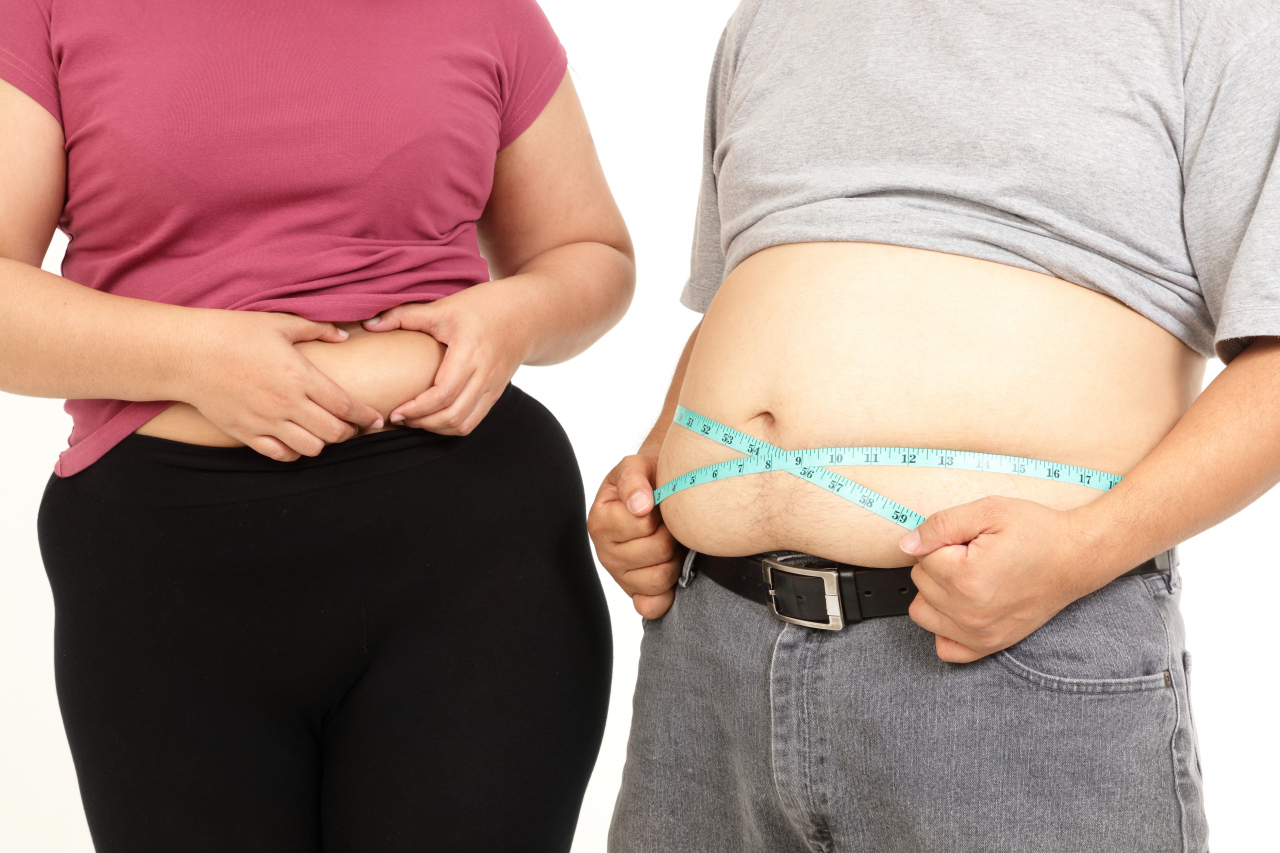Are Koreans really fat?
While not quite as serious as the self-perception, obesity is increasingly becoming a point of concern among Koreans.
By Yoon Min-sikPublished : April 25, 2023 - 15:13
For 27-year-old Choi, the main focus in her life recently has been getting her weight down. The after-work dinners at her new job and frequent dates with her new boyfriend have resulted in her tipping the bathroom scale into the above-55-kilogram range for the first time in her life, prompting her to panic-buy a gym membership, exercise equipment and organic meal kits.
“I just feel so big since I’ve put on the extra weight. I want to get my weight down to below 50 kilograms,” she said.
At 165 centimeters tall and with a body mass index of around 20, smack in the middle of the “normal” range, she could be the poster child for modern Korean women in that she perceives herself to be much fatter than she actually is.
But while the population of South Korea as a nation is among the slimmest of the OECD member countries, figures indicate that obesity is increasingly becoming a problem in a country that has seen rapid changes in diet and lifestyle patterns.

How fat is fat?
Like Choi, many South Korean women have a tendency to perceive themselves as "fat" when they really are not.
Last month, researchers from Konkuk University Medical Center found that South Korean women have a higher tendency to overestimate their own weight. They analyzed the data from women aged between 20 and 40 from 2001 and 2018, and found that the tendency to overestimate one’s weight increased from around 10 percent to 20 percent in that time.
In other words, one in five women surveyed in 2018 thought they were fatter than they really are.
Despite what many locals think, the percent of the population that is obese in South Korea is lower than in most other developed countries. According to 2018 OECD data, the percent of obese adults in the country was 5.9 percent, the second-lowest among the OECD member nations after Japan. In comparison, the percent of adults who were obese in the US was 40 percent.
Nevertheless, data from local health authority Korea Disease Control and Prevention Agency suggests a rather different picture. According to this data, the percent of obese adults in Korea was 34.6 percent in 2018, far higher than the 5.9 percent reported by the OECD for Korea.
The Korean agency put the percentage of obese adults here at 37.1 percent in 2021.
The disparity stems from the fact that the international standard for obesity is a BMI of 30 or more, while the Korean standard is a BMI of 25 or more.

South Korea classifies BMI figures of 25-29 as first-level obesity, 30-34 as second-level obesity, and 35 and above as third-level. But by the international standard, the first-level obesity category in Korea is considered "overweight," not "obese."
There has been a debate about whether Korea should conform to the international standard, but local experts have opposed the idea.
Last year, the Korean Society for the Study of Obesity recommended that the country maintains its current standard for obesity at 25 or above. It cited research that indicated that for East Asians, health risks rose significantly for those with a BMI of 25 or above.
Women worry, but it’s the men who put on weight
Setting aside Korea's disparate definition of obesity, there are still indications that obesity is becoming a more significant health hazard here compared to in the past.
The percentage of the Korean population that is obese has been rising, albeit at a relatively moderate rate, since the government started keeping statistics on the matter in 1998.
Despite many women being concerned about being over weight, numbers indicate that the female population has kept obesity under control for the most part.
In 2001, the percent of women who were obese was 27.4 percent while the figure was 26.9 percent in 2021. In the span of two decades, the highest figure of South Korean women who were obese was 28 percent in 2012.
Far more alarming were the changes in the percent of men who are obese. The figure for the male population jumped from 31.8 percent in 2001 to 46.3 percent in 2021. The worst was in 2020, when nearly half of the male population -- 48 percent -- was obese.
The year 1998 was the last time the percent of males who were obese was lower than that of females -- 25.1 percent to 26.2 percent. While women sustained that level for the next 23 years, the figure for men nearly doubled in that time span. Over 54 percent of the men in their 30s and 40s were obese in 2021.

By international yardsticks, however, the percent of obese men in South Korea is again among the lowest in the world. In 2021, only 7.6 percent of the nation's adult men were classified as obese internationally, which corresponds to second or third-level obesity under local guidelines.
Local experts say what’s more important here is the pace of growth in the percent of men who are obese: Since 2008, the figure has increased every single year for all age groups. In 2008, men who were categorized as having second- and third-level obesity amounted to 4.1 percent. But by 2021, the figure had risen 85 percent to 7.6.
Obesity a growing problem for Koreans
Several factors contribute to Koreans' rising weight, but a primary suspect is a shift in their dietary habits.
With Korea historically having been an agricultural society, Koreans for centuries traditionally consumed a diet rich in grains and vegetables, with less meat compared to Western nations.
A 2021 report by the Korea Rural Economic Institute shows a rapid change in what and how much Koreans eat. Yearly meat consumption by an average South Korean went from 13.9 kilograms in 1980 to 68.1 kilograms in 2019, while grain consumption went from 185 to 133.

South Koreans consumed 2,485 calories per day in 1980, which jumped to 3,098 calories per day in 2019. About 13.1 percent of the daily intake in 1980 was fat, but the figure jumped to 34.6 percent in 2019.
In short, South Koreans are eating a lot more meat and fat.
It is possible that the percent of obese here may escalate more steeply in the future, with data indicating that the number of obese children and teenagers has spiked in recent years.
The Health Insurance Review & Assessment Service last month announced that 7,559 children and teenagers across the country were treated for obesity in 2021, compared to 2,241 in 2017. A pan-government study released last week showed that 18.7 percent of the elementary, middle and high school students in the country were obese in 2022, compared to 10.6 percent in 2018.
Numbers show that obesity among South Koreans is not yet quite as severe a problem as in countries like the US or Mexico, which respectively were the most obese and the second most obese countries in the aforementioned OECD data. They also show that many South Korean women think they are fatter than they actually are.
But the obesity problem befalling Korean men and adolescents, however, is a very real one, as research indicates that they are consistently becoming more overweight. While South Koreans may not be a particularly fat country as of now, there is no telling what will happen in the future if particularly the male and young population continue on the current trajectory of getting chubbier each year.







![[KH Explains] Hyundai's full hybrid edge to pay off amid slow transition to pure EVs](http://res.heraldm.com/phpwas/restmb_idxmake.php?idx=644&simg=/content/image/2024/04/18/20240418050645_0.jpg&u=20240419100350)







![[From the Scene] Monks, Buddhists hail return of remains of Buddhas](http://res.heraldm.com/phpwas/restmb_idxmake.php?idx=652&simg=/content/image/2024/04/19/20240419050617_0.jpg&u=20240419175937)

![[KH Explains] Hyundai's full hybrid edge to pay off amid slow transition to pure EVs](http://res.heraldm.com/phpwas/restmb_idxmake.php?idx=652&simg=/content/image/2024/04/18/20240418050645_0.jpg&u=20240419100350)

![[Today’s K-pop] Illit drops debut single remix](http://res.heraldm.com/phpwas/restmb_idxmake.php?idx=642&simg=/content/image/2024/04/19/20240419050612_0.jpg&u=)